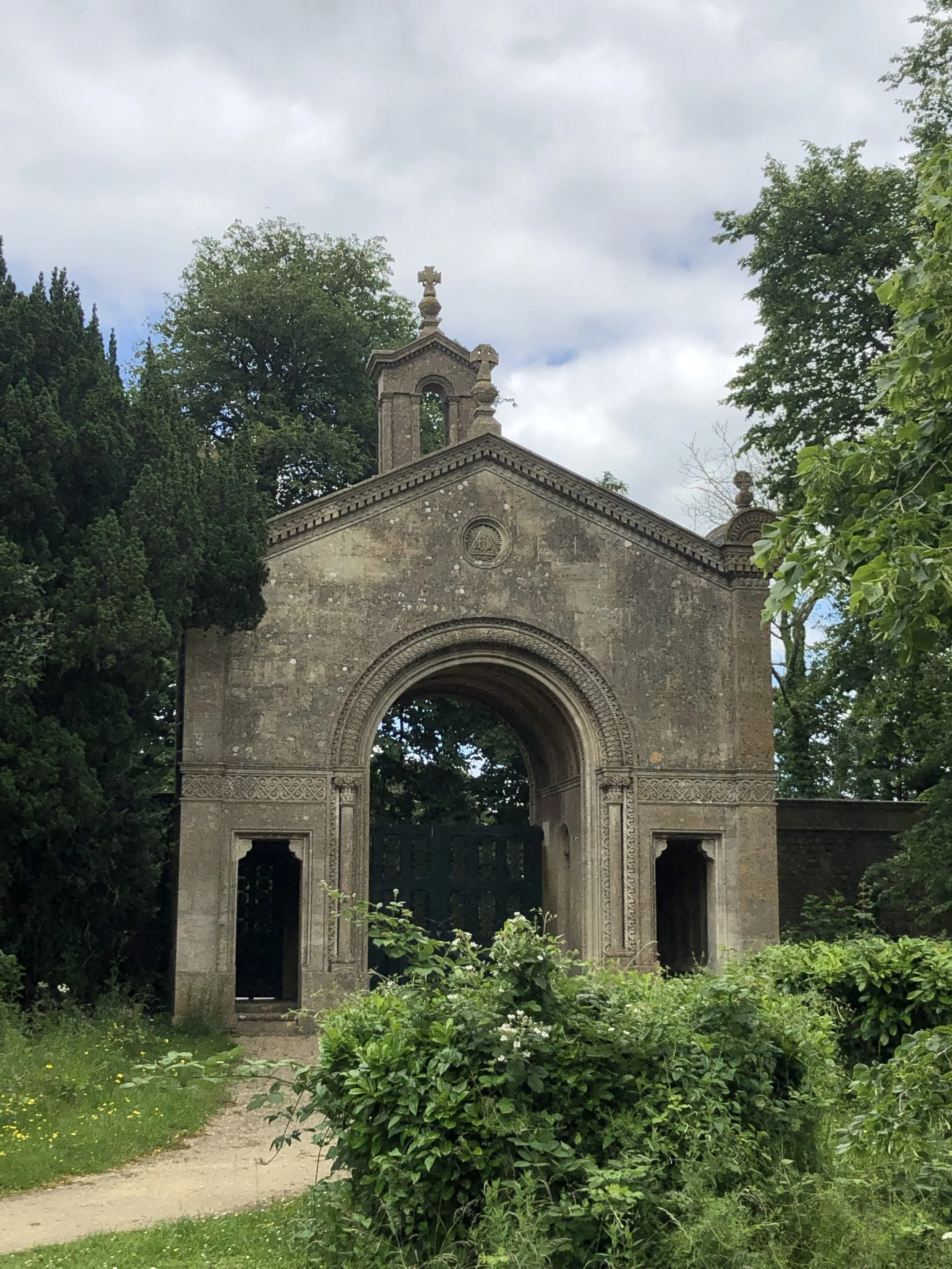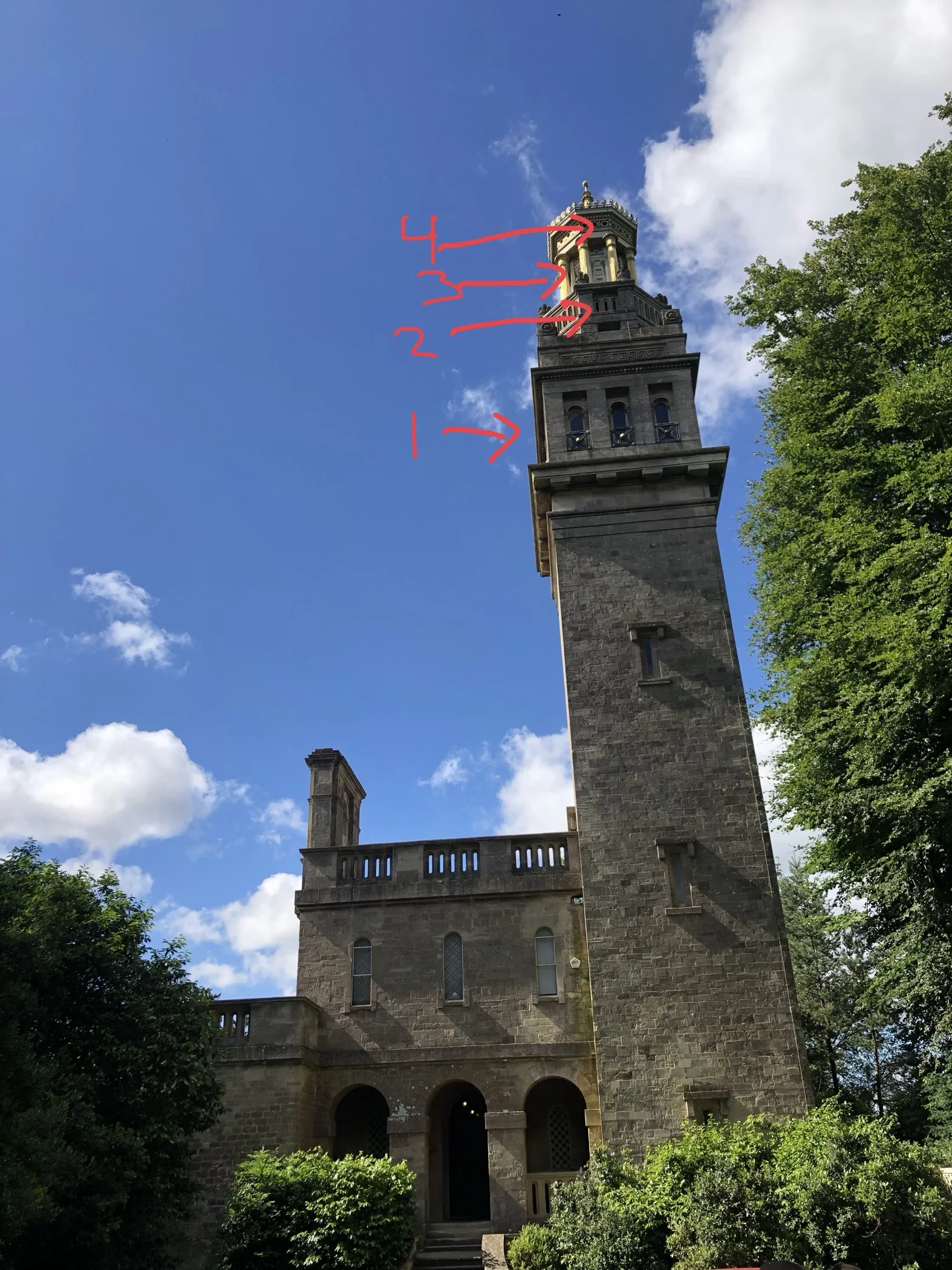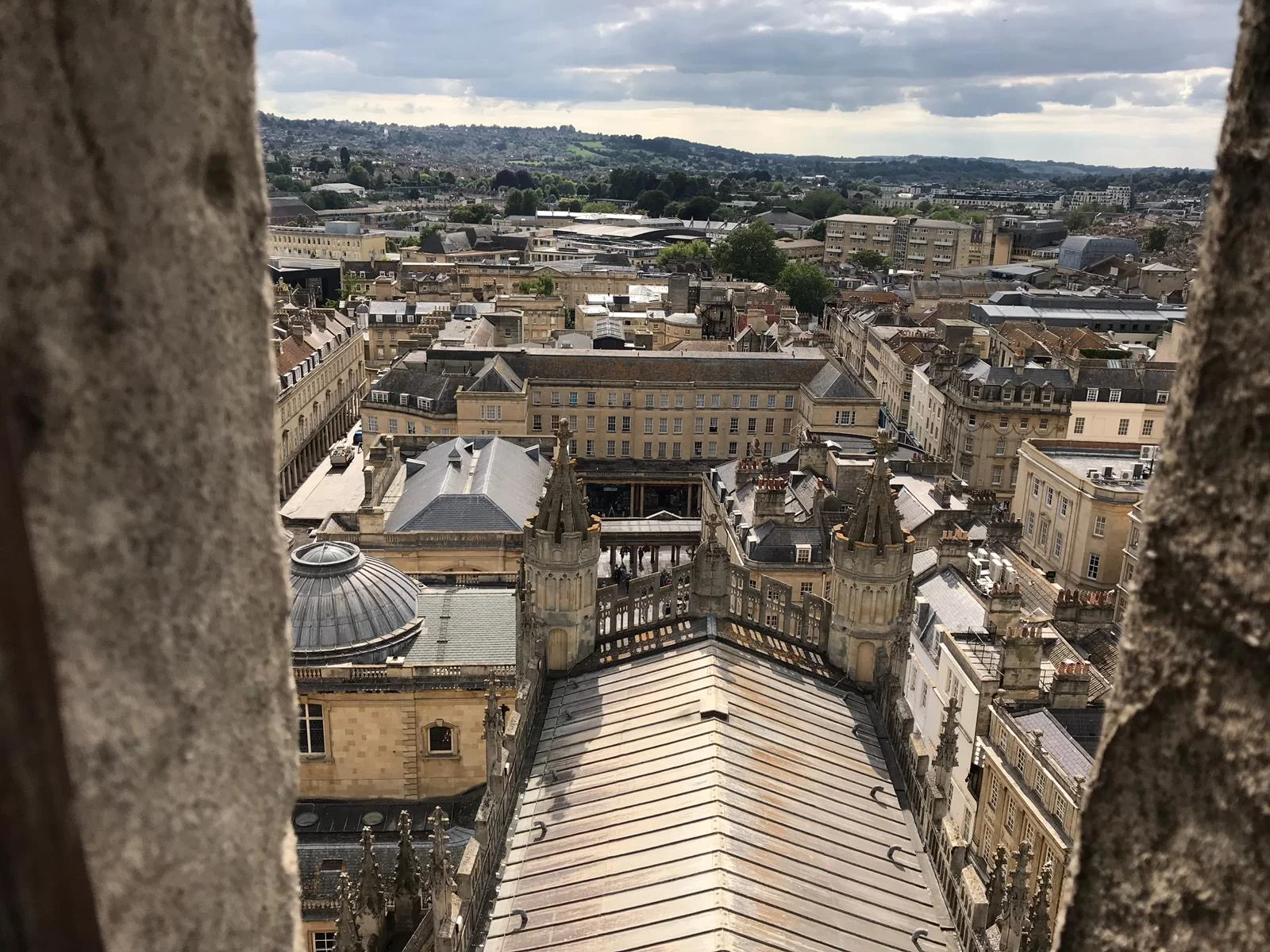OPP Day 2: Beckford's Tower
This felt like the real start of the program, mostly because I had to wake up super early… which I quickly learned was a trend of this trip. Fortunately, there was a wonderful Starbucks just a few blocks away from our Townhouse and they opened at 6am, which was a savior for those early days.
Day 2 In a remarkable feat of planning by Jean, our fearless leader, a line of cabs met us outside our townhouse. We were driven outside city center to the more residential hills of Bath to reach Beckford’s Tower. There we were greeted by Amy Frost, Senior Curator at Bath Preservation Trust. Amy told us the take of Beckford, and it remains one of my favorite Fancy Revenge stories of all time.
In short, William Thomas Beckford was quite well-to-do. He was also bisexual, a big no-no in the 1700s. Such a big no, in fact, that when he was caught romancing a young William Courtenay, the future 9th Earl of Devon. As punishment, Beckford was exiled away from England. For years he traveled around Europe collecting art and rare books. He returned home from exile and built an incredible home with an incredible tower to store and display all his treasures, and then put up a wall around the property so no one could see it unless expressly invited beyond the tall walls. Everyone knew about Beckford’s incredible collection and heard about his insane tower and home… but nope. Unless Beckford approved, you weren’t getting anywhere near it. When he died, his body was placed in an opulent pink marble tomb on a man-made island in the shadow of his great tower. His beloved dog, Tiny, is buried right next to him. Aw.
Interesting story aside, the building itself is incredible. Our time with Amy Frost was spent learning about how to survey conditions of a historic building. Working in the heritage field, it’s quite likely that you might find yourself in a historic building, where the building itself can play as important a role in the visitor experience of a site as the collection, exhibits, and programs it holds within. Heritage buildings provide a sense of place and grounding to historic sites, and their care as a part of the core collection is critical. Like other paths of collection care, when caring for historic buildings it’s important to understand the principal building materials, how they interact with the environment, and how they degrade or change over time. It’s also important to understand how the materials interact with other materials that might be used to do repairs or other restoration work.
Amy took us through the analysis of the materials of Beckford’s Tower and led us through exercises to survey the condition of various sites of the property, where we had to consider the outdoor environmental conditions. In the end we had to make recommendations for future restoration or preservation work.
The knowledge we gained during these exercises was invaluable, and I feel much more prepared to confidently speak about architectural condition reporting of historic sites. As someone who currently works in a historic house, it’s valuable that I can read reports of our structure from years past and future and understand them properly. I can also be more mindful about our structure and, as someone who spends a lot of time there, begin to understand changes to the building because of time and environmental change. I am also more apt to communicate with the people who will help us through those changes in the future.
Amy said something today that has stuck with me— she said that making decisions about collections in the heritage field, whether it be a building or book, is how to carefully balance and toe the line between preservation and access. One one hand, part of our job is to protect and preserve the state of objects and places for the benefit of future generations. This can mean a lot of hands-off policies that result in objects being largely inaccessible for the sake of preserving them. The other part of our job is our responsibility to our communities— we have these objects and we have the responsibility to serve the public by making them accessible for leaning and enjoyment. We are failing if we put too much emphasis on one at the expense of the other— what’s the point of having objects in immaculate condition if they are kept in a highly controlled bubble where only a tiny percentage of people will ever benefit from their existence? But that means we also have to be willing to give a little on each end too. It might mean that our objects and places are not always in absolute perfect conditions, but it does mean that the public benefits from us allowing a little extra light to shine on things a few weeks out the year, or letting people explore and touch the walls of a building that is meaningful and where you can feel and hear history just by placing your fingertips on the stone.
Back to The Tower. One of the coolest things about the Open Palace Programme is that you get an incredible amount of access to incredible people and places. Amy handed us hardhats and we got to venture up to the parts of the tower that are restricted to visitors. It was a lot of stairs and for someone who suffers from a bit of vertigo and anxiety about tight spaces, it was not an easy trip for me going up, and the vertigo made it slightly worse heading down. It was worth it though, and I’m glad I pushed my brain to get through it. The views from the top were astonishing, and I can see why Beckford treasured his time spent alone in the tower.











